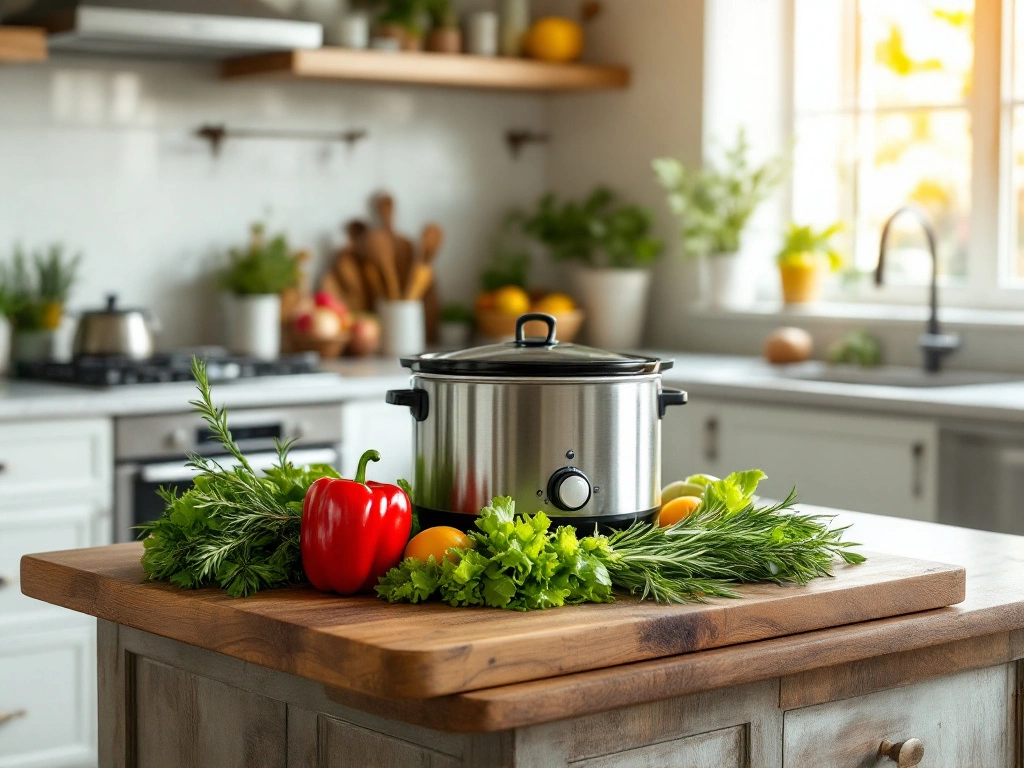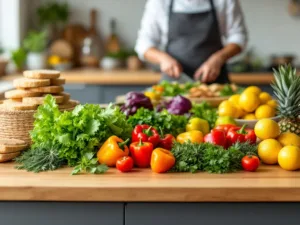Cooking with Seasonal Vegetables: How to Take Advantage of Each Season
Introduction
In a world where convenience often trumps quality, the art of cooking with seasonal vegetables has become a lost treasure. Yet, there is something inherently satisfying about preparing a meal with ingredients that are at their peak of freshness, flavor, and nutritional value. Seasonal cooking is not just a trend; it’s a return to the roots of sustainable living, a way to support local farmers, and a method to reduce our carbon footprint. This article delves into the benefits of cooking with seasonal vegetables, explores the unique offerings of each season, and provides practical tips to help you make the most of nature’s bounty. Whether you’re a seasoned chef or a home cook, this guide will inspire you to embrace the rhythm of the seasons and transform your meals into vibrant, healthful experiences.
The Benefits of Cooking with Seasonal Vegetables
1. Superior Flavor and Nutrition
Seasonal vegetables are harvested at their peak ripeness, ensuring they are packed with flavor and nutrients. For example, a tomato picked in the height of summer will have a sweetness and juiciness that far surpasses its off-season counterpart. Nutrients like vitamins C and A, as well as antioxidants, are also at their highest levels in freshly harvested produce.
2. Cost-Effectiveness
When vegetables are in season, they are more abundant, which drives down prices. Buying seasonal produce is not only economical but also allows you to experiment with a wider variety of ingredients without breaking the bank.
3. Environmental Sustainability
Eating seasonally reduces the need for long-distance transportation, refrigeration, and artificial growing conditions, all of which contribute to a smaller carbon footprint. By choosing local, seasonal produce, you’re supporting sustainable farming practices and reducing environmental impact.
4. Supporting Local Economies
Purchasing seasonal vegetables often means buying from local farmers’ markets or community-supported agriculture (CSA) programs. This helps sustain local economies and fosters a connection between consumers and the people who grow their food.
Seasonal Vegetables: A Guide to Each Season
Spring: A Time for Renewal
Spring is a season of rebirth, and its vegetables reflect this with their bright, tender, and refreshing qualities.
Key Spring Vegetables:
- Asparagus: Known for its delicate flavor, asparagus is perfect for grilling, roasting, or adding to salads.
- Peas: Fresh peas, whether snap, snow, or shelling varieties, add sweetness and crunch to dishes.
- Radishes: These vibrant root vegetables bring a peppery kick to salads and sandwiches.
- Spinach: Tender and versatile, spinach can be used in everything from smoothies to sautés.
Cooking Tips for Spring Vegetables:
- Keep it Simple: Spring vegetables shine when prepared simply. Try blanching asparagus and tossing it with olive oil, lemon zest, and Parmesan.
- Embrace Raw Preparations: Fresh peas and radishes are excellent in salads, allowing their natural flavors to take center stage.
Summer: A Bounty of Color and Flavor
Summer is the season of abundance, with a wide array of vegetables that are perfect for grilling, salads, and fresh salsas.
Key Summer Vegetables:
- Tomatoes: Juicy and flavorful, tomatoes are the stars of summer dishes like caprese salad and gazpacho.
- Zucchini and Summer Squash: These versatile vegetables can be grilled, spiralized, or baked into breads.
- Bell Peppers: Sweet and crunchy, bell peppers are ideal for stir-fries, roasting, or stuffing.
- Corn: Fresh corn on the cob is a summer staple, perfect for boiling, grilling, or incorporating into salads.
Cooking Tips for Summer Vegetables:
- Grill Everything: Grilling enhances the natural sweetness of summer vegetables. Try skewering bell peppers, zucchini, and cherry tomatoes for a colorful kabob.
- Make Fresh Salsas: Combine diced tomatoes, onions, cilantro, and lime juice for a refreshing topping for grilled meats or fish.
Fall: A Harvest of Hearty Flavors
As the weather cools, fall vegetables bring warmth and depth to the table.
Key Fall Vegetables:
- Pumpkins and Winter Squash: These are perfect for soups, roasts, and pies.
- Brussels Sprouts: Roasting brings out their nutty sweetness.
- Sweet Potatoes: Versatile and nutrient-dense, sweet potatoes can be mashed, roasted, or turned into fries.
- Cauliflower: A blank canvas for flavors, cauliflower can be roasted, riced, or turned into a creamy soup.
Cooking Tips for Fall Vegetables:
- Roast for Depth of Flavor: Toss Brussels sprouts or cauliflower with olive oil, salt, and pepper, then roast until caramelized.
- Embrace Comfort Foods: Use pumpkins and squash to make hearty soups or creamy risottos.
Winter: A Time for Root Vegetables and Greens
Winter vegetables are hearty and nourishing, providing comfort during the colder months.
Key Winter Vegetables:
- Kale and Collard Greens: These leafy greens are perfect for soups, stews, and sautés.
- Carrots and Parsnips: Sweet and earthy, these root vegetables are ideal for roasting or mashing.
- Beets: Their vibrant color and earthy flavor make them a standout in salads or roasted dishes.
- Cabbage: A versatile vegetable, cabbage can be used in slaws, soups, or stir-fries.
Cooking Tips for Winter Vegetables:
- Make Hearty Soups: Combine kale, carrots, and parsnips in a flavorful broth for a comforting winter soup.
- Experiment with Fermentation: Turn cabbage into homemade sauerkraut or kimchi for a probiotic-rich side dish.
Practical Tips for Cooking with Seasonal Vegetables
1. Plan Your Meals Around the Season
Start by researching what’s in season in your area. Use this information to guide your meal planning and grocery shopping.
2. Visit Farmers’ Markets
Farmers’ markets are a great way to access fresh, seasonal produce while supporting local farmers. Don’t be afraid to ask vendors for cooking tips or recipe ideas.
3. Preserve the Harvest
If you find yourself with an abundance of seasonal vegetables, consider preserving them through freezing, canning, or pickling. This allows you to enjoy seasonal flavors year-round.
4. Experiment with New Recipes
Seasonal cooking is an opportunity to try new dishes and techniques. For example, use summer zucchini to make zucchini noodles or fall squash to create a creamy pasta sauce.
5. Embrace Imperfection
Seasonal vegetables don’t always look perfect, but their flavor more than makes up for it. Don’t shy away from misshapen or blemished produce.
Conclusion
Cooking with seasonal vegetables is a celebration of nature’s cycles and a commitment to sustainable, healthful living. By embracing the unique offerings of each season, you can elevate your meals, support local communities, and reduce your environmental impact. Whether you’re savoring the freshness of spring peas, the abundance of summer tomatoes, the heartiness of fall squash, or the nourishment of winter greens, seasonal cooking invites you to connect with the world around you in a meaningful way.
As you embark on your seasonal cooking journey, remember that the key is to keep it simple, experiment with new flavors, and enjoy the process. Let the seasons guide your culinary adventures, and you’ll discover a world of flavor, nutrition, and joy that transcends the ordinary. Happy cooking!









Add comment